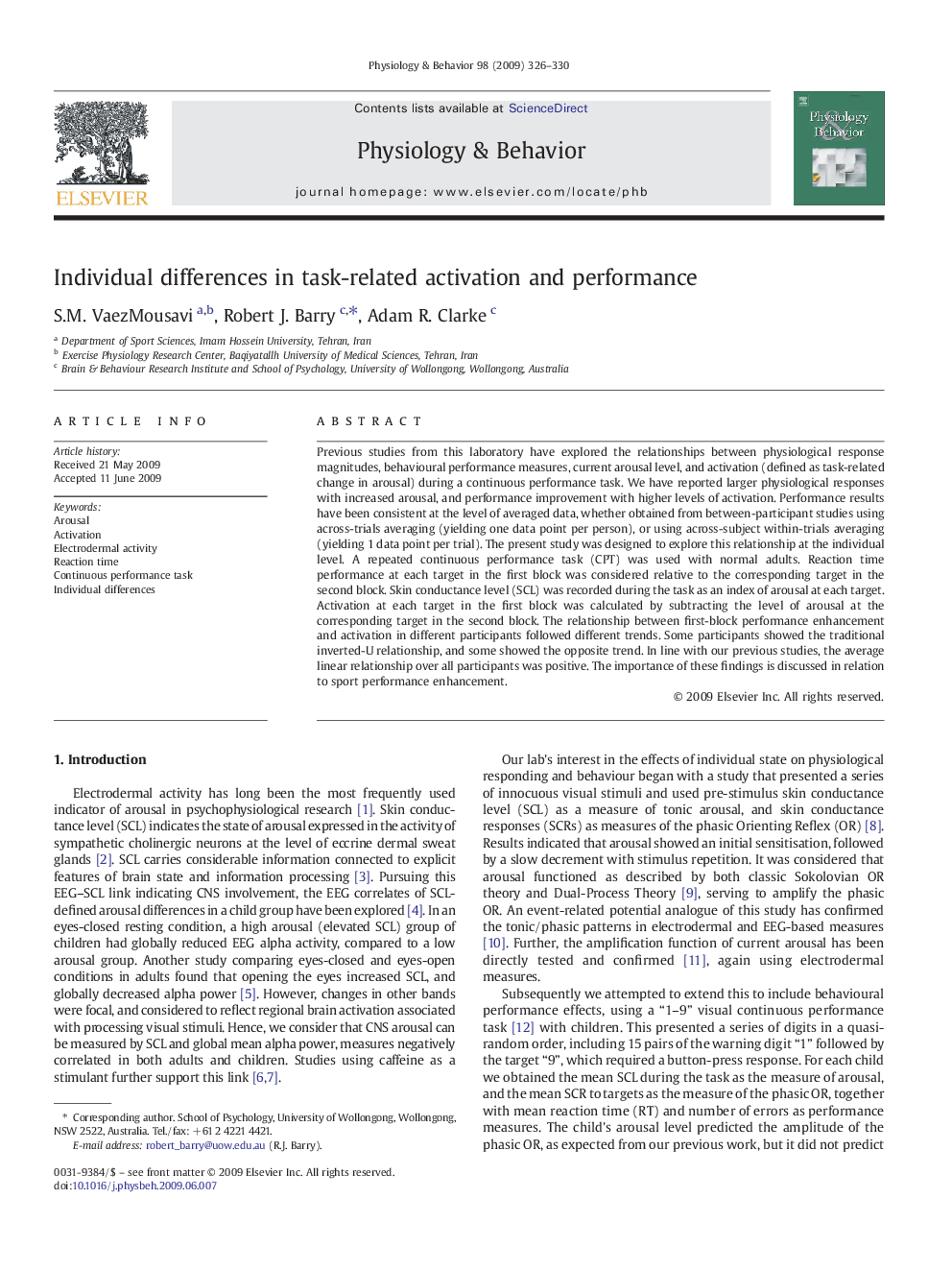| Article ID | Journal | Published Year | Pages | File Type |
|---|---|---|---|---|
| 2845014 | Physiology & Behavior | 2009 | 5 Pages |
Previous studies from this laboratory have explored the relationships between physiological response magnitudes, behavioural performance measures, current arousal level, and activation (defined as task-related change in arousal) during a continuous performance task. We have reported larger physiological responses with increased arousal, and performance improvement with higher levels of activation. Performance results have been consistent at the level of averaged data, whether obtained from between-participant studies using across-trials averaging (yielding one data point per person), or using across-subject within-trials averaging (yielding 1 data point per trial). The present study was designed to explore this relationship at the individual level. A repeated continuous performance task (CPT) was used with normal adults. Reaction time performance at each target in the first block was considered relative to the corresponding target in the second block. Skin conductance level (SCL) was recorded during the task as an index of arousal at each target. Activation at each target in the first block was calculated by subtracting the level of arousal at the corresponding target in the second block. The relationship between first-block performance enhancement and activation in different participants followed different trends. Some participants showed the traditional inverted-U relationship, and some showed the opposite trend. In line with our previous studies, the average linear relationship over all participants was positive. The importance of these findings is discussed in relation to sport performance enhancement.
